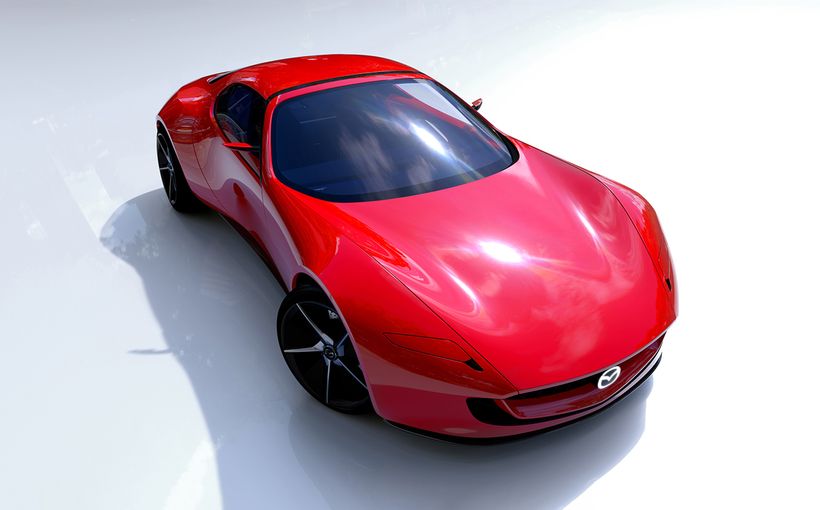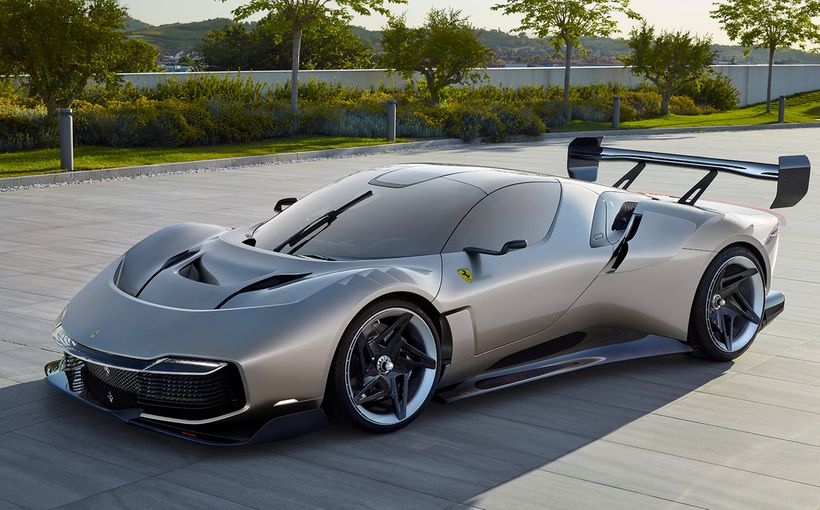Geneva Motor Show 2019: Our fave concepts and why it’s the true dawn of the EV revolution
IT MIGHT be in the midst of a miserable Swiss winter, but the Geneva Motor Show has long been regarded as one of the most significant events on the annual motoring calendar.
Normally, manufacturers from all over the world take the opportunity to showcase their new and latest wares just before the northern spring selling season looms, but this year the mood took on a decidedly more… futuristic vibe, previewing the coming decade’s new wave of next-generation electric vehicles.
Yep, if you think EVs are still a pipedream then think again, because this year at Geneva, we witnessed electrification en-masse.
Leading the charge, so to speak, was the Honda e Prototype, yet another preview of the production version of the company’s battery electric city car, first seen back at the 2017 Frankfurt motor show as the Urban EV Prototype. Said to be “85 per cent there” by one company official, the Swiss showcar ditches the original Civic-esque retro design cues for a more conservative, five-door silhouette, underlying its practicality focus.

Little is known about the powertrain, except that the electric motor drives the rear wheels, range is in excess of 200km and there’s a fast charger offering an 80 per cent top-up in 30 minutes. Australia might eventually see the 2020 production version, though high pricing could scuttle the diminutive Honda’s chances of success here.
Those clever engineers from Ingolstadt might stand a better chance with the handsome Audi Q4 e-tron. Also out next year, this is a right-sized crossover aimed directly at where all the action is – mid-sized SUVs.

At a tad under 4.6 metres long, 1.9m wide and 1.6m tall, the German SUV relies on a pair of electric motors offering 225kW of power, to take the five-seater wagon to 100km/h in 6.3 seconds, while also capable of averaging a 450km range. Who needs fossil fuels?
All the usual brand hallmarks are present – clean styling, the “Singleframe” grille, matrix LED headlights, bulging wheelarches, all-digital ‘Virtual Cockpit’ dashboard, flawless quality – but so is a big dose of desirability. Audi is also promising sporty, refined dynamics. It’s certainly one to watch.
It might have a silly name, but the Kia Imagine is a very serious attempt at something different – a sort of modular jack-of-all-trades melding the style of an SUV, limousine, coupe, hatchback and muscle car. Slightly larger than today’s Cerato, this understated four-seater luxury EV debuts the Hyundai-Kia conglomerate’s first dedicated electric platform, ushering in – among other things – a low-mounted, induction-charged battery pack.

No other details have been divulged, other than the fact that the company says the Imagine is more about the future direction of design within an electrification context. Note that the concept’s cabin includes no fewer than 21 screens spread across the dash “… as a humorous and irreverent riposte to the on-going competition between some automotive manufacturers to see who can produce the car with the biggest screen,” according to a Kia spokesman. Don’t hold your breath for the Imagine hitting your local dealership anytime soon, then.
Looking like the lovechild of a Kia Soul and Suzuki Swift, the Fiat Centoventi (120) is more production-bound, since it previews the Italian brand’s vital replacement for the big-selling (in Europe at least) Panda sub-B supermini series.

Dubbed as an affordable electric mobility solution, the Centoventi is all about customisation, down to a battery that can offer as little as 100km range for budget-conscious urban-runabout users or as much as 400km for long-distance owners. Buyers will also be able to configure the roof, bumpers, wheels, interior trim, infotainment system and colour schemes according to taste and affordability. Speaking of which, Fiat aims to make this the least expensive EV available when sales commence sometime early next decade.
At the other end of the EV scale is the Pininfarina Battista, a low-slung hypercar that’s claimed to be Italy’s most powerful road-legal vehicle ever. Consider: 1416kW of power and 2300Nm of torque from its four electric motors powering one wheel apiece, for a 0-100km/h dash of under two seconds flat and 300km/h available just 10s later on the way to a 350km/h V-max. Phwoar! Range from a big 120kWh battery pack is 450km.

Featuring a full-carbon-fibre monocoque chassis with carbon-fibre body panels using aluminium reinforcements, just 150 Battistas will be built (by hand, naturally) with only 50 cars allocated for Europe, North America and the Middle East. Sorry Australasia. If sales take off as spectacularly as the Battista’s acceleration, this will be the first of several Pininfarina-branded EV exclusives moving into the 2020s.
Yet it wasn’t just the tidal wave of coming electrification superstars that hogged the Swiss limelight, with several near-production concepts pointing to some exciting internal combustion petrol-electric hybrid models ahead.
Witness, for example, the Aston Martin Vanquish Vision Concept, previewing the British marque’s first-ever series production mid-engined supercar, whilst reviving a vaunted nameplate in the process. Rivalling the likes of the McLaren 720S, it eschews the front-engine/rear-drive layout of the previous two V12-powered Vanquish generations (from 2001 and 2012 respectively), joining the more-extreme mid-engined Valkyrie, Valkyrie AMR Pro and AM-RB 003 hypercars when sales commence in 2022.

The Vanquish draws much from these in terms of design and engineering, but employs a newly developed bonded aluminium architecture instead of the others’ all-carbon-fibre structure and bodywork. Behind the rear axle is a twin-turbo V6; though no other powertrain details have been revealed, it’s expected to also draw upon hybrid assistance for extra oomph. Bring it on.
There was also the Alfa Romeo Tonale, little brother to the BMW X5-sized Stelvio, and another key pillar to the Italian brand’s recovery plan.

Dubbed the Tonale and showcased in electrified concept form (Alfa’s first to go down that path), the newcomer is expected to share some of its oily bits underneath with the related Jeep Renegade and Fiat 500X. The Geneva model combined a 1.3-litre turbo-petrol unit and an electric motor on the rear axle, to produce between 142kW and 179kW, for a circa-7.0s 0-100km/h sprint time, 50km of pure EV range and sub-50g/km of carbon dioxide emissions. Despite all that greenery, the marque reckons the Tonale will “deliver the best driving dynamics in the segment”, stressing that “the electrification of Alfa Romeo comes at the service of sportiness”.
Finally, and still with Italy, the Ferrari F8 Tributo broke cover in Switzerland.

Essentially a facelift of the gorgeous 488 GTB supercar, its mid-rear-mounted 530kW/770Nm 3.9-litre twin-turbocharged V8 offers slightly better outputs than before, so can hit 100 clicks in only 2.9s, 200km/h in 7.8s and 340km/h all up – improvements of 0.1s, 0.5s and 10km/h respectively over its predecessor. Aiding the cause here are better aerodynamics and a 40kg mass drop.
Price? About $500,000 plus on-road costs if the $469,988 488 GTB is anything to go by.
These and other debutantes certainly helped make the 2019 Geneva Motor Show one of the more memorable automobile exhibitions of the last few years.
Protect your Classic. Call Shannons Insurance on 13 46 46 to get a quote today.










